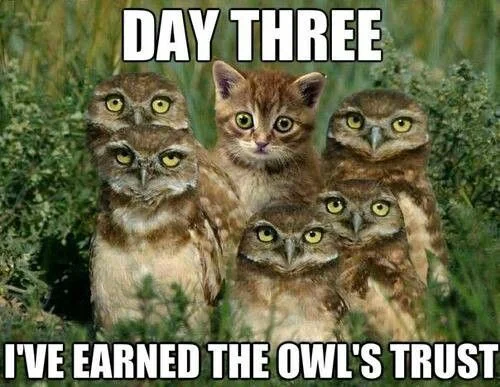Emoji are great and/or they will destroy the world
Outside of emoji researchers, lots of people still forecast disaster or dream of universal communication even if most of us are confident that neither is nigh. Despite our protests, emoji inspire visions of apocalypse and utopia.
As with many linguistic resources (sounds, words, syntax), people use emoji to grind all sorts of axes. For example, people who say that women use more emoji than men are usually making some point that the data don't support. The first step in such an analysis is to ignore or discount the fact that, say, Snoop Dogg and Kyle MacLachlan are among the biggest emoji users in the world.
In this talk, I'll demonstrate how ideologies of emoji work themselves out across 870 journalists that political scientists have separately scored as liberal, conservative, or centrist. This lets us compare objective vs. subjective stances and inverts the idea that gender explains emoji to show how it is that emoji are a way that people "do" gender differently based on their political commitments.
Read More
Who do you trust most: a robot, an alarm clock or your partner?
I’ll kick off this post with a definition of trust, but focus on an analysis of trust in everyday and not-so-everyday situations: about 12,000 conversations among friends, family members and strangers. About 10% of all these conversations make some mention of trust. Then I’ll turn to more extreme situations exemplified by characters in 135 different TV shows, episodes are longer than conversations but on average 53% of TV episodes make at least one mention of trust.
Read More
Speak Spanish like a movie character
TL;DR: If you want to practice your Spanish fluency for two-word phrases, check out flashcards here:
https://quizlet.com/tyler_schnoebelen/folders/speak-spanish-like-youre-in-a-movie
Read More
Language and emotion
Here are 14 essays, 7 presentations, and reading notes on 57 different papers/books all having to do with emotion and language.
Read More
Emotions are relational: positioning and the use of affective linguistic resources
(Download my dissertation here)
To understand human beings is to understand the variety and complexity of emotional experiences they have. Understanding how language is both shaped by and used in creating and coping with these experiences is the focus of this dissertation. It offers three case studies about affective linguistic resources, advancing a theoretical framework (positioning) and a series of quantitative methodologies that grow out of information-theoretic approaches to language.
Read More
Notes for 35 seminars
This page is notes for the vast majority of classes I took while I was a grad student at Stanford. Most of them are in the linguistics department, but there are also some in design, anthropology, and sociology.
Read More
African languages
A collection of work on African languages, with a special focus on a language isolate I worked on in Ethiopia (Shabo or Chabu...and sometimes Tsabu)
Read More
Undergrad syntax course materials
Tom Wasow's class on syntax was "an introduction to the basic concepts of modern syntactic theory through the development of a rigorous grammar of a substantial fragment of English." In particular, the class introduces the HPSG syntactic framework (Head-driven Phrase Structure). The textbook is the very readable Bender, Sag, and Wasow (2003), Syntactic Theory: A Formal Introduction (recommendation: use the second edition).
Read More
African American Vernacular English
Lecture and section notes for John Rickford's class on African-American Vernacular English. "The English vernacular spoken by African Americans in big city settings, and its relation to Creole English dialects spoken on the S. Carolina Sea Islands (Gullah), in the Caribbean, and in W. Africa. The history of expressive uses of African American English (in soundin' and rappin'), and its educational implications."
Read More
Syntax at Stanford
These are notes from my grad school classes at Stanford. I have a hard time imagining they will be useful to anyone who isn't a linguistics grad student BUT maybe you are!
Read More
Notes on 65 linguistics articles
Here's a list of 65 articles/books about linguistics and related fields that I wrote up notes for (or wrote up notes from seminar discussions on them).
Read More
Sociolinguistics
A lot of my research has been on the social aspects of meaning. Here, I've collected together a bunch of relevant course notes.
Read More
How do kids choose their syntax?
Marie-Catherine de Marneffe, Scott Grimm, Uriel Cohen Priva, Sander Lestrade, Gorkem Ozbek, Tyler Schnoebelen, Susannah Kirby, Misha Becker, Vivienne Fong and Joan Bresnan. 2007. “A statistical model of grammatical choices in children’s production of dative sentences.” Formal Approaches to Variation in Syntax, University of York, England.
One of the most well-studied questions in child language acquisition is what type of knowledge children possess to guide their syntactic production.
Some posit that children are able to construct abstract representations to facilitate the acquisition of specific items, whereas others take the specific items as primary, claiming children learn each construction individually as anchored to a specific lexical item.
A less frequently pursued question is what is the range of influential factors which weigh upon a child’s production choice. Understanding which factors potentially motivate children’s production choices will broaden the context in which one can pursue questions about children’s acquisition of syntactic production capacity.
For instance, it is becoming increasingly clear that adult production is sensitive to multiple factors, including both discourse and grammatical factors (see representative studies by Wasow (2002), Szmrecsanyi (2005), Jaeger (2006), Hinrichs & Szmrecsanyi (2007) and references therein). It is thus important to test whether such factors play a role in children’s syntax, so as to gain a better understanding of what factors are at stake in the acquisition process.
Read More












